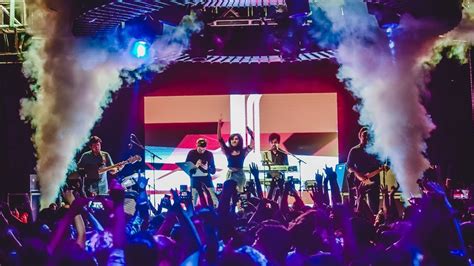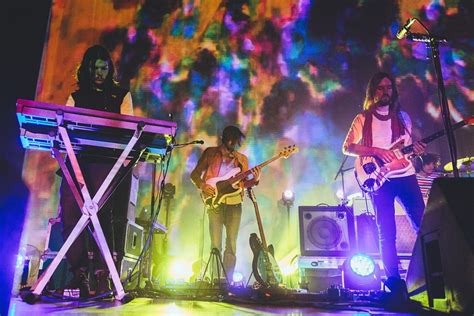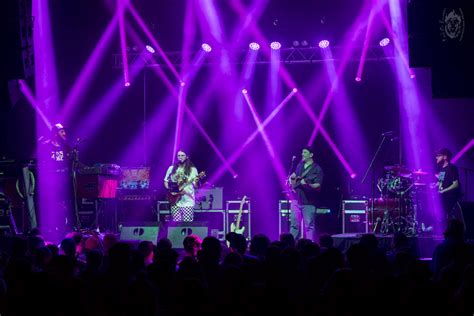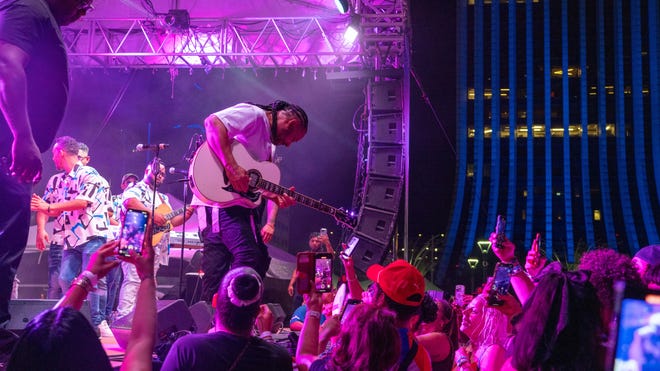The Puerto Rican Parade is a vibrant celebration of Puerto Rican heritage and culture, deeply rooted in history and tradition. Each year, the streets come alive with the rhythmic sounds of salsa, the vibrant colors of the Puerto Rican flag, and the joyful spirit of the community. This article takes an inside look at the history and significance of the parade, explores the key events and activities, and shares personal stories from participants. Through interviews with organizers and key figures, we’ll uncover the parade’s impact on the Puerto Rican community and its future, ensuring this cherished tradition continues to thrive.
Investigate this topic thoroughly with ritarblog.com
1. History and Significance of the Puerto Rican Parade
The Puerto Rican Parade, a vibrant expression of cultural pride and unity for Puerto Ricans in the diaspora, has its roots in the mid-20th century. Its inaugural march, held in New York City in 1958, coincided with a period of rapid growth for the Puerto Rican community in the United States, especially in urban areas. The parade was envisioned as a platform to celebrate and safeguard Puerto Rican heritage, simultaneously raising awareness of the community’s achievements and challenges.
For decades, the parade has blossomed into a monumental cultural event for Puerto Ricans, attracting millions of participants and spectators from across the nation and beyond. This celebration is more than just a spectacle of music, dance, and traditional attire; it symbolizes the enduring strength and vitality of the Puerto Rican community. The parade serves as a powerful reminder of the shared history and heritage that unites Puerto Ricans, while simultaneously fostering cultural exchange and understanding with the wider public.
The Puerto Rican Parade is more than just a celebration; it serves as a platform to advocate for social and political issues that affect the Puerto Rican community. This event empowers the community to raise its voice, ensuring its concerns are heard and its rich heritage is recognized and celebrated.

2. Key Events and Activities During the Parade
The Puerto Rican Parade is a vibrant celebration brimming with events and activities that highlight the richness of Puerto Rican culture. The parade typically begins with a grand opening ceremony, featuring speeches from prominent community members and performances of the Puerto Rican national anthem, “La Borinqueña.” This is followed by a colorful procession of floats, each decorated to showcase various facets of Puerto Rican heritage, ranging from historical events to traditional music and dance.
The parade bursts with life, showcasing a dazzling array of traditional dances. Energetic salsa, bomba, and plena rhythms fill the air as troupes in vibrant costumes dance their way along the route, captivating onlookers with their lively movements. Musical performances add to the vibrant atmosphere, with live bands offering a diverse selection of music, ranging from modern reggaeton beats to timeless Puerto Rican folk songs.
Beyond the performances, the parade features the crowning of the Parade Queen, a symbol of the Puerto Rican community’s spirit and pride. Along the parade route, vendors set up shop, offering traditional treats like arroz con gandules and pasteles, giving attendees the chance to savor authentic Puerto Rican cuisine while soaking in the celebratory atmosphere.

3. Interview with Parade Organizers and Key Figures
Organizers and key figures of the Puerto Rican Parade play a crucial role in bringing this vibrant event to life each year. In interviews, these leaders shared insights into the parade’s planning and its deeper significance to the Puerto Rican community. One of the main organizers emphasized the importance of preserving cultural heritage, noting that the parade is not just a celebration but a way to educate younger generations about their roots.
Key figures like the Grand Marshal, often a well-respected member of the Puerto Rican community, discussed the honor of leading the parade and the responsibility it carries in representing Puerto Rican pride and resilience. They also highlighted the parade’s evolution over the years, adapting to reflect contemporary issues while maintaining its traditional essence.
Another organizer spoke about the logistical challenges of coordinating such a large-scale event, from securing permits to coordinating with local businesses and volunteers. Despite these challenges, their dedication is fueled by the parade’s impact on fostering unity and showcasing the richness of Puerto Rican culture to the world. These interviews offer a glimpse into the passion and commitment behind this iconic celebration.

4. Cultural Performances and Highlights
The Puerto Rican Parade bursts with cultural performances that celebrate the island’s vibrant heritage. Bringing the energy and traditions of Puerto Rico to the streets, the parade is a lively showcase of the island’s spirit. One of the most anticipated elements is the diverse array of dance performances, which highlight traditional Puerto Rican forms like bomba, plena, and salsa. Dancers, resplendent in colorful costumes, captivate the audience with their rhythmic movements, embodying the spirit and history of these dance styles.
Music forms the very heart of the parade, showcasing a vibrant array of live performances that encompass everything from reggaeton to traditional Puerto Rican folk music. Bands and musicians, stationed on floats or marching through the streets, fill the air with the infectious rhythms of congas, guitars, and trumpets, creating an irresistible invitation for all to join in the festive atmosphere.
Moreover, the parade showcases traditional Puerto Rican art forms, such as vibrant and elaborate vejigante masks, a hallmark of Puerto Rican celebrations. These cultural elements not only entertain but also provide valuable insights into the island’s rich artistic heritage. The performances and art displays serve as a compelling testament to the cultural vibrancy and ingenuity that characterize Puerto Rican identity.
5. Personal Stories from Parade Participants
The Puerto Rican Parade is more than just a celebration; it’s a deeply personal experience for many participants who share their stories of pride, heritage, and connection. For some, the parade is an annual tradition that has been passed down through generations. One participant shared how attending the parade with their grandparents as a child instilled in them a profound sense of Puerto Rican identity. Now, they bring their own children to experience the same sense of belonging and cultural pride.
Another participant, a first-time marcher, spoke about the overwhelming emotions they felt being part of the parade. They described the experience as a powerful reminder of their roots, especially as someone who had been disconnected from the island after moving to the mainland United States. Marching in the parade allowed them to reconnect with their heritage and feel a part of a larger community.
Some stories highlight the parade’s role in bringing people together. Participants often speak of the camaraderie and unity felt among the crowd, regardless of their backgrounds. These personal stories underscore the parade’s significance as a celebration of identity, community, and the enduring spirit of Puerto Rican culture.
6. The Parade’s Impact on the Puerto Rican Community
For the Puerto Rican community, the Puerto Rican Parade is a celebration of immense significance. It serves as a powerful expression of cultural pride and unity, fostering a deep connection among Puerto Ricans both on the island and in the diaspora. Beyond its festive atmosphere, the parade embodies resilience, showcasing the rich heritage and history of Puerto Rico while acknowledging the challenges faced by the community.
The parade serves as a powerful symbol of heritage and belonging for many, particularly those who have been away from the island. It brings the Puerto Rican community together, allowing them to celebrate their vibrant culture and share it with the wider world. Furthermore, the parade plays a crucial role in educating younger generations about their roots, ensuring that the traditions and stories of Puerto Rico are passed down for generations to come.
More than just a cultural celebration, the parade has served as a powerful tool for social and political awareness. It has brought attention to critical issues affecting the Puerto Rican community, from the economic hardships on the island to the obstacles faced by Puerto Ricans on the mainland. By elevating these concerns, the parade has amplified the voices of Puerto Ricans, advocating for their rights and needs within a larger societal framework.
7. Future of the Puerto Rican Parade and Upcoming Plans
The future of the Puerto Rican Parade is marked by a commitment to both tradition and innovation, with plans to enhance the celebration while preserving its core values. Organizers are focused on expanding the parade’s reach and inclusivity, aiming to involve more diverse groups and communities in the festivities. Future plans include incorporating new cultural elements and modernizing aspects of the parade to appeal to younger generations, while still honoring the traditional music, dance, and attire that define the event.
Efforts are also underway to strengthen community engagement by increasing opportunities for local artists, performers, and vendors to participate. Organizers are exploring partnerships with educational institutions and cultural organizations to provide more interactive and educational experiences during the parade. Additionally, there is a push to make the parade more sustainable, with initiatives aimed at reducing its environmental impact.
These forward-looking plans ensure that the Puerto Rican Parade will continue to be a vibrant and meaningful celebration, reflecting the evolving spirit of the Puerto Rican community while staying true to its rich heritage.
The Puerto Rican Parade remains a vibrant celebration of heritage, community, and pride, bringing together people to honor Puerto Rican culture and history. Through its lively performances, personal stories, and cultural impact, the parade not only showcases the island’s rich traditions but also fosters unity and advocacy within the community. As it evolves, the parade continues to be a powerful symbol of resilience and cultural celebration for generations to come.
ritarblog.com

